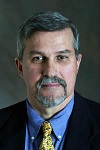Financial Management
Accredited Consulting Service for Dr. Keysser DBA MBA MAPA Accredited Senior Consultant (ASC)
Executive Summary Video
The Appleton Greene Accredited Consultant Service (ACS) for Financial Management is provided by Dr. Keysser and provides clients with four cost-effective and time-effective professional consultant solutions, enabling clients to engage professional support over a sustainable period of time, while being able to manage consultancy costs within a clearly defined monthly budget. All service contracts are for a fixed period of 12 months and are renewable annually by mutual agreement. Services can be upgraded at any time, subject to individual client requirements and consulting service availability. If you would like to place an order for the Appleton Greene Financial Management service, please click on either the Bronze, Silver, Gold, or Platinum service boxes below in order to access the respective application forms. If you have any questions or would like further information about this service, please CLICK HERE. A detailed information guide for this service is provided below and you can access this guide by scrolling down and clicking on the tabs beneath the service order application forms.
Client Telephone Conference (CTC)
If you have any questions or if you would like to arrange a Client Telephone Conference (CTC) to discuss this particular Unique Consulting Service Proposition (UCSP) in more detail, please CLICK HERE.
Bronze Client Service
Monthly cost: USD $1,500.00
Time limit: 5 hours per month
Contract period: 12 months
SERVICE FEATURES
Bronze service includes:
01. Email support
02. Telephone support
03. Questions & answers
04. Professional advice
05. Communication management
To apply – CLICK HERE

Silver Client Service
Monthly cost: USD $3,000.00
Time limit: 10 hours per month
Contract period: 12 months
SERVICE FEATURES
Bronze service plus
01. Research analysis
02. Management analysis
03. Performance analysis
04. Business process analysis
05. Training analysis
To apply – CLICK HERE
Gold Client Service
Monthly cost: USD $4,500.00
Time limit: 15 hours per month
Contract period: 12 months
SERVICE FEATURES
Bronze/Silver service plus
01. Management interviews
02. Evaluation and assessment
03. Performance improvement
04. Business process improvement
05. Management training
To apply – CLICK HERE
Consultant Profile
Dr. Keysser is an approved Senior Consultant at Appleton Greene and he has experience in finance, globalization and marketing. He has achieved a Doctorate of Business Administration in International Business & Finance, a Master of Business Administration in Finance and a Master of Arts Public Administration in Urban Planning. He has industry experience within the following sectors: Banking & Financial Services; Manufacturing; Technology; Energy and Healthcare. He has had commercial experience within the following countries: United States of America, or more specifically within the following cities: Minneapolis MN; New York NY; San Francisco CA; Dallas TX and Chicago IL. His personal achievements include: raised $4.5M for manufacturer; Director/CIO med-device company; turnaround Med-device company; turnaround/funding robotics company and facilitated EU entry US manufacturer. His service skills incorporate: financial analysis; feasibility studies; capital raising; M&A transactions and financial planning.
To request further information about Dr. Keysser through Appleton Greene, please CLICK HERE
Executive Summary
Financial Management
Finance is a mission-critical function for any company. The financial pressures on companies are unabating throughout their life cycle, whether they are in early-stage development, mid-stage growth, turnaround, or late-stage exit. It is critical that any company has a comprehensive and detailed Financial Management System, including financial analysis of current operations, feasibility studies of projected growth plans, cashflow proformas, an understanding of its current and anticipated capital structure, and careful management of the capital raising and M&A process. Companies that lack in-depth financial management systems are more likely to fail than those who have these systems in place, despite having great products. Companies with strong financial management systems have a distinctive competitive advantage over those firms that lack these systems, due to having more efficient operations; a clearer understanding of their sources of profitability; a more efficient capital structure; a better awareness of the financial risks entailed in future growth plans; and greater access to capital.
Dr. Keysser has over 35 years of professional experience as an investment banker and a business financing consultant, including serving as Managing Director for Dain Rauscher and SVP and Principal at Miller & Schroeder Financial. He is a Professor of Finance at Saint Mary’s University, in their MBA program, teaching courses in Corporate Finance, International Finance, Financial Institutions, Investment Banking, Government Finance, and Managerial Accounting. He is also on the adjunct faculty at the University of Minnesota, Carlson School of Management, teaching International Finance.
His personal achievements include raising over $3 billion of capital in over 250 engagements; structuring complex financial analyses and projections for early-stage and mid-stage technology companies; developing complex financial management systems for technology companies; raising debt and equity capital; and advising in M&A transactions. His service skills incorporate (a) financial analysis; (b) feasibility studies and proformas; (c) capital structure review; (d) project management in M&A and investment banking; (e) turnaround management; (f) financial management and capital budgeting; (g) raising capital; and (h) interim CFO services.
Service Methodology
The essence of a successful Financial Management System for a company, as provided by Dr. Keysser, is having an in-depth understanding of the details of the financial operations of the company. This includes understanding the precise sources of profits and losses at a micro level, the company’s current capital structure of debt and equity, the financial implications of management policies (such as terms of sales, and leasing versus purchasing), the measurable costs and risks of future growth plans, the weighted average costs of all capital raised including the opportunity cost of using retained earnings, and the opportunities for an M&A transaction, buy-side or sell-side. The company may choose to use an Enterprise Resource Planning (ERP) system, in some cases, but much of what is defined as financial management can be accomplished without an expensive ERP system, especially for small capital-constrained companies.
A successful Financial Management System therefore incorporates (a) developing an understanding, at a micro-level, of the sources and causes of the company’s profits and losses (as broken by product, location, marketing campaign, sales distribution, and other metrics); (b) examining the company’s capital structure of debt and equity and calculating the Weighted Average Cost of Capital (WACC) of the company; (c) reviewing all growth strategies and opportunities through feasibility studies and discounted cash flow (DCF) analyses of their future operations and strategies; (d) examining different options for raising the External Funds Needed (EFN) for future growth strategies; (e) reviewing the company’s foreign exchange (FX) practices and policies, including mitigating exposure risks; (f) reviewing, on a continual basis, the opportunities for an M&A transaction; and (g) analyzing the company’s dividend policies.
Service Options
Companies can elect whether they just require Appleton Greene for advice and support with the Bronze Client Service, for research and performance analysis with the Silver Client Service, for facilitating departmental workshops with the Gold Client Service, or for complete process planning, development, implementation, management and review, with the Platinum Client Service. Ultimately, there is a service to suit every situation and every budget and clients can elect to either upgrade or downgrade from one service to another as and when required, providing complete flexibility in order to ensure that the right level of support is available over a sustainable period of time, enabling the organization to compensate for any prescriptive or emergent changes relating to: Customer Service; E-business; Finance; Globalization; Human Resources; Information Technology; Legal; Management; Marketing; or Production.
Service Mission
Following a rigorous Financial Management System strategy increases the odds that any company, no matter where it is in its life-cycle, will be successful and prevail in a highly competitive and uncertain industry. It is a very structured approach, yet flexible enough to continually adapt to changes in the company’s competitive, financial and regulatory environment.
Dr. Keysser’s Unique Service Proposition (USP) is to assist his clients in developing a holistic understanding of every aspect of their Financial Management System, and how this System integrates with and coordinates with all other elements of the company – sales and marketing, growth planning and management, operations, human resources. Finance becomes the linchpin on which all other elements ride. Proper financial management, including access to capital, ensures that all other parts of the company, from sales through delivery, have the capital resources to function correctly, and the access to capital needed for expansion. A company with a robust well-managed Financial Management System has the resources needed to prosper; a company without this system will continually struggle to survive.
A good example of this was Dr. Keysser’s work with a bio-pharma company that was at a relatively early stage in its development, with a strong IP portfolio, an array of new pharmaceuticals with very interesting potential, a continual need for additional capital for R&D, a relatively inexperienced financial team, and a C-level team whose strengths lay more in biopharma than in financial management. As their financial consultant and investment banker, Dr. Keysser assisted them in developing a robust financial management system, project their future capital needs, and interact with the investor community, including bringing in two funding offers from major credible funding sources.
Service Objectives

- Managerial Accounting
An important first step for a company to improve, maintain and sustain profitability is to understand, in detail, the sources of the company’s revenues, costs and resulting profits, breaking these down by product line, technology, location, market area, sales campaigns, personnel, supply chains, operational procedures, and other metrics. For example, the company may find that by disaggregating its financial data, what appears to be a profitable enterprise at the macro level will obscure the fact that some elements lose money while other elements are highly profitable. This information, when disaggregated to the micro level, can assist the company in making decisions on products, technologies, market areas, sales methods, marketing campaigns, personnel and locations. Data is key to understanding a company’s financial profile. The Financial Management System develops a data driven and statistically analyzed information base that allows managers to examine in depth the underlying structure of the company’s financial operations. You can’t make more money until you understand how you are making money now. Companies use advanced Managerial Accounting methods to develop this complex understanding. In some cases, it may be appropriate to convert the company’s spreadsheet-based management system into an Enterprise Resource Planning (ERP) system. But with or without an ERP, the company can aggregate and analyze the data needed for this understanding. Once the company understands these underlying dynamics of profits and losses, combined with reviewing its capital structure, the company can make reasoned and data-drive decisions on its various strategies of product selection, technology adoption, sales and marketing campaigns, personnel, and locations. - Capital Structure
All companies have some level of a capital structure, even if it is only the owner’s equity and a bank loan. As company’s financial needs grow and become more complex, their capital needs escalate rapidly, to the point where a company, especially one in a capital-intensive industry such as manufacturing or medical-tech, will be continually seeking additional sources and forms of capital, both for Capital Expenditures (CapEx) and Working Capital. All forms of capital are essentially categorized as forms of debt or forms of equity. Our Financial Management System will help the ownership understand its true cost of capital, by calculating the company’s Weighted Average Cost of Capital (WACC). The WACC is calculated by looking at each form of capital, calculating the effective cost of that specific form of capital, and then aggregating those costs by their weighting in the overall capital structure of the company. It is important to account for the tax impact of capital, since interest on debt is tax-deductible while dividends on equity are not. This tax structure tends to favor debt over equity, yet the consequence of issuing more equity is that ownership is further diluted. Once the company understands its WACC, it can then develop future funding campaigns to result in the most cost efficient capital structure possible, reducing the overall cost to the company. sand as future funding campaigns are planned, implement the most cost-efficient structure for that capital. The other implication of the calculation of WACC is that the WACC then becomes the discount factor used in future capital budgeting analyses, and the discount rate used in the analyzing the Net Present Value (NPV) of proposed budgeting decisions. The lower the WACC, the more feasible a project; the higher the WACC, the less feasible a project. - Capital Budgeting
As companies continue to grow, especially for companies in capital-intensive technological industries, it is important to develop an on-going and rigorous capital budgeting system, both for the constituent elements within the company by unit or division, and for the overall aggregated company. This is not just a one-time end-of-year effort, but a continual effort throughout the year, identifying growth opportunities and replacement needs, determining the incremental revenues and costs associated with those opportunities, and matching them against the available capital, either current retained earnings or funding potentially available from the market. The process begins with a review of all growth opportunities available to the company, and all requests for funding from the individual units or divisions. Then the incremental impact of each specific project – whether a new R&D campaign, changes in products, new locations, new or replacement equipment, added personnel – is calculated, both on the revenue and cost side. This incremental impact is then projected into the future through a cashflow proforma, making various assumptions of inflation, market size, sales efforts, competitive risks, Costs of Goods (COGs), and pricing. These future incremental net gains are then subjected to a Discounted Cash Flow (DCF) analysis, where each year’s net gains are reduced to the current time through present value. Here, the WACC discussed above becomes important, since the WACC is the discount rate, in most cases, at which the future cashflow is discounted back to the present. Once the sum of present values is computed, the upfront costs of the new opportunity are subtracted, which results in a Net Present Value (NPV) analysis. If the NPV is positive, then the project is viable, at least by financial standards. If the NPV is negligible or negative, then the project is most likely not viable, again by financial standards. The NPV method can also be used to compare multiple alternative projects available to the company, allowing it to rank-order various opportunities. - M&A
Companies typically seek continuous growth, and one avenue for growth is to acquire other companies, in either a horizontal or vertical diversification strategy. Acquisitions can be tremendous engines for growth, or disasters that can severely damage a company (think of Daimler acquiring Chrysler). Acquisitions can help a company to absorb competitors, expand its technology and IP portfolio, gain market share, consolidate a fragmented market, gain market share through new territories, and acquire additional assets of plant and equipment. Using its Financial Management System, a company can engage in buy-side transactions. Dr. Keysser can assist the company in identifying its needs for growth, and opportunities for potential acquisition. Then a feasibility study of this acquisition can be conducted, using different assumptions of valuation, incremental costs and revenues, and acquisition costs. Then the company, through its consultant, can develop a Discounted Cash Flow (DCF) proforma to project future net gains, present-valued back to the present at the company’s Weighted Average Cost of Capital (WACC), as discussed above. Part of this analysis is to analyze how the company will fund this acquisition – through a combination of retained earnings, outside debt and outside equity. The costs of this acquisition capital becomes part of the analysis in determining the Net Present Value (NPV) of the proposed transaction to the company. The company needs to obtain any outside funding needed to conclude the acquisition, and the close the transaction. In all of these steps, the company’s consultant can play a pivotal role. In a sell-side strategy, if a company wants to divest a unit or subsidiary that no longer meets the long-term corporate needs of the company, or exit entirely, Dr. Keysser can assist the company in valuing that candidate for sale, identify likely buyers, assemble a disclosure package, approach likely buyers, and assist in closing the transaction. - Raising Capital
Companies continually need additional capital for maintenance of current operations, and for growth and acquisitions. This is a combination of Capital Expenditures (CapEx) and Working Capital. This capital can come in the form of using retained earnings (which is in part is a function of the company’s dividend policy), external debt of various sources, and external equity. Debt can come in the form of bank or non-bank senior secured debt, subordinated unsecured debt, Accounts/Receivable (A/R) financing, Purchase Order (PO) financing, leasing, sale-leasebacks, and various government grant and loan programs (such as the Export/Import Bank). Equity can come in the form of owners’ contributions, private angel equity, institutional equity, public equity versus private equity, and common stock versus preferred stock. Raising capital is a complex and multi-layered process. It begins with a clear vision of the company’s directions and growth opportunities, its capital budgeting process (see above), and its analysis of the capital needs for growth and acquisition. Using the Weighted Average Cost of Capital (WACC) calculated earlier (see above), the company can then determine its optimum and most cost-efficient form of capital structure, typically a blend of various debt sources and equity methods. Dr. Keysser can assist the company in developing a strategy of acquiring the most cost-effective forms of capital, through its Financial Management System, and in conducting capital funding campaigns. This process begins, as discussed above, with the analysis of current operations and financial management, growth strategies, a capital budgeting process, a Net Present Value (NPV) analysis of potential opportunities and competing opportunities within the company, a calculation of the company’s Weighted Average Cost of Capital (WACC), acquisition opportunities, and then the optimum capital structure for the company.
Testimonials
Flambeau Plastics
“Dr. Keysser was instrumental in assisting us to develop a growth strategy for our rapidly expanding plastic case market. We were very successful at the time in other areas of plastics manufacturing, but this was a new venture for us, to reflect a shift in the overall market demand for plastic products. He helped us to identify and analyze an opportunity for a new out-state manufacturing facility to accomplish this growth, including developing a feasibility study and a financial analysis of the potential growth from this opportunity. He helped us to review our existing financial and capital structure, and recommended an approach for raising the needed capital. He then generated the external funding needed, through raising $10M of senior debt, to successfully implement this strategy.”
Albertson’s Foods
“Dr. Keysser brought an idea to us of refinancing some of our existing stores to take advantage of reduced interest rates, and a very strong demand in the market for our proposed type of debt. At the time, there were advantages within the tax code that made those financing methods feasible, but those provisions were scheduled to be reduced in the near future. He assisted us in analyzing the net impact on our bottom line of undertaking these refinancings. He was a key figure in this strategy, recommending options for lowering our costs of capital and our operating costs, and reminding us of the time-urgency of concluding these refinancings before the announced change in tax law. He then conducted the refinancings of seven of our stores in four different states, which contributed significantly to our cost savings.”
Bio-Thera
“Dr. Keysser served as our financial advisor and investment banker, and assisted us in developing very detailed and comprehensive financial models and proformas of our drug development and FDA testing processes, including 3 different phases of trials in four different countries, simultaneously. He also was very helpful in developing a strong Financial Management System for us. At the time, we were a relatively early-stage biopharma company with a strong IP portfolio, almost no revenues, a lengthy development cycle, and relatively little experience in financial management. We were able to use the models he developed, and the disclosure package assembled by Don and his team, to obtain funding proposals from two Silicon Valley-based venture capital firms.”
Enova Illumination
“Dr. Keysser has been a major participant in our planning process, developing our funding strategy, our cashflow proformas, and a disclosure package for going out to investors. He played a significant role in developing our Financial Management System, at a time when we did not have a CFO and only had a part-time Controller. He also helped us to negotiate a Joint Development and Cross Licensing Agreement with an off-shore medical technology company, in which we invested our own equity capital, and he is now helping us to negotiate a Distribution Agreement with a large medical equipment distributor.”
Summit Machine
“We have gone through two turnaround efforts with Dr. Keysser, as our sales and out financial performance has gone up and down. Throughout those turnaround campaigns, he helped us to understand our underlying financial performance, our needs for growth capital, and opportunities for growing through acquisitions. He helped us to refinance our existing debt twice. He was also instrumental in assisting us to convert from a spreadsheet-based management system to the Made 2 Manage ERP system, as part of our continuing to refine our Financial Management System. He reviewed several different diversification strategies for us, including entering two markets that would have been new to us, but would have been a logical extension of our existing strengths and expertise.”
More detailed achievements, references and testimonials are confidentially available to clients upon request.
Industries
This service is primarily available to the following industry sectors:
Financial Services
These are times of unprecedented change for Banking & Financial Services organizations around the world. Never before have we seen such disruption in the industry, from soaring customer demands and new competition, the development of new financial technology (FinTech) models, geographically diverging regulations, shifts in political/economic systems, and a global battle for talent. In every corner of the world, financial institutions are engaged in a race to overcome these headwinds by leveraging the explosion of emerging technologies to drive digital transformation across their enterprises. But combining multiple technologies without creating a disjointed customer experience, while juggling a lack of skilled resources and the omnipresent specter of data security is far from easy, particularly when trying to grow top line income and manage cost reductions.
Capital remains very available globally; estimations of excess capital, or ‘dry powder’ as the industry often calls it, are in the trillons of dollars. Much of that capital is in Asia and the Middle East, not just in the western nations. But non-western capital is continually looking for safety, making western opportunities especially attractive to them.
Creating a strong Financial Management System can help companies optimize their business model to take advantage of technologies including cloud, software-defined networks, intelligent automation and Blockchain. Dr. Keysser can assist his clients by providing unparalleled industry insight to conduct analyses of financial mechanisms through our Financial Management System. These assessments provide the information needed to design next generation operating models and implement best in class processes to drive lasting competitive advantage for our clients. This includes developing a robust capital budgeting and feasibility study process, a strong and cost-efficient capital structure and identifying optimum growth strategies.
 Consultancy Services
Consultancy Services
To stay competitive in a globalized ecosystem of enterprises, it is very helpful and often essential to draw on the expertise of outsourced advisors, who can help your business scale its operations, reduce overhead, increase profit margins, and become more productive and efficient. These advantages can result from integrating and streamlining workflows and strategic projects in novel ways, and by implementing new solutions to solve common – and uncommon – business “pain points.” Dr. Keysser, as your consultant, can help your business realize its full potential by offering key insights and critical intelligence that can help a business of any size and in any location scale its growth and reach and fulfill all its strategic, long-term goals, using a strong, robust and sustainable Financial Management System that he will help you develop.
Outside consultants can play a critical role, and a cost-effective role, for a company wresting with growth and financial management issues. First, consultants can be brought in on a limited basis, as-needed, to address specific problems. In many cases, companies do not have the in-house capacity to deal with those issues, nor should they need to, since the in-house team will cost considerably more (salary and benefits) and are much less flexible in their contracts. Consultants can bring in a level of expertise not currently within the company, with a fresh outside perspective, at a reduced cost, and for a shorter defined term of operations. If managed well, outside consultants can integrate into the existing management team at a company, as a resource and not a threat to existing managers.
Energy Management
The world and the business community continues to come to grip with the scientific objective reality of climate change; this is now generally agreed as being settled science. As a consequence, the world of energy management (energy production, efficiency, pollution abatement, demand reduction, and innovative technologies) is rapidly evolving to meet the social and economic needs of our communities while increasing protection of the environment. This creates numerous opportunities for new businesses and research in all fields of energy, such as alternative sources of energy, energy efficiency, alternative forms of global supply chains to reduce energy usage, and new transportation technologies. However, these opportunities typically have significant initial costs, even if they can be shown to have major long-term positive economic impacts. Even where this a new overall added cost, the realities of environmental regulation around the world dictate that we companies will have to absorb increased costs to manage energy over time, and therefore challenge is to do so in the most cost-effective manner.
As one example, some of the airlines and airplane manufacturers are exploring possibilities in bio-based jet fuels, to reduce the demand for carbon-based energy sources and to reduce pollution from jet engines. Intertwined with the question of the scientific feasibility of this technology is the question of their financial feasibility. Even if it can be established that bio-based fuels are effective and feasible, are the added costs of that fuel affordable, without increasing the costs of air travel? On the other hand, can it be shown that, when taking into account the ‘true’ price of carbon-based fuels, can it be shown that bio-based fuels are actually more cost-effective, especially when factoring in the environmental impact of bio-wastes?
Dr. Keysser can assist you in evaluating the cost-effectiveness of new energy opportunities and requirements, through feasibility studies and Discounted Cash Flow (DCF) analyses, and to obtain funding for necessary, and sometimes mandated, changes in energy management, as part of your Financial Management System.
 Manufacturing Operations
Manufacturing Operations
A robust Financial Management System can help your company improve every facet of its manufacturing and supply chain operations, tailoring an approach that scales from targeted enhancements to a complete reinvention of your capabilities. Dr. Keysser can work with your operations staff and manufacturing consultants to assist your company in identifying the domain expertise, tools, diagnostics, benchmarks, third-party specialists and the best financial practices you need to achieve immediate value today as you build toward your long-term vision of maximizing shareholder value.
An important element of a Financial Management System is a detailed, clear-eyed assessment of where your operations and supply chain processes stand today. This type of diagnosis provides a standardized approach and proprietary benchmarks that give you a qualitative and quantitative assessment of your financial starting point. This diagnosis assesses four critical facets of manufacturing: supply chain, footprint design, plant performance, and digital/Industry 4.0 (internet-of-things). Using a Financial Management System can assist your company in determining its savings potential, allowing you to visualize your current state, spot areas of opportunity and prioritize the actions that will vault you ahead of your competitors. It will also assist you in determining the optimal capital budget for moving forward with changes to your manufacturing operations and supply chain processes, analyze the feasibilities of those proposed changes, including a cashflow proforma and a Net Present Value analysis, and then creating the most cost-efficient capital structure for realizing those goals.
Operations systems and supply chain processes tend to be relatively capital-intensive, yet the cost-effectiveness of those elements within a company’s ecosystem can be among the strongest forces for profitability, or loss. A robust Financial Management System can be the tool needed to ensure that the company’s operations systems and supply chain processes are operating at the highest possible levels of efficiency.
Medical Devices
The global medical devices market was valued at over $447 Billion (USD) in 2019 and is expected to grow to over $671 Billion by 2027, a CAGR of 5.2% (Precedence Research). Increasing investment in Research & Development (R&D) activity by medical technology companies for the development of new and advanced medical devices and quick approval for those devices by the regulatory authorities is expected to drive forward the market growth for medical devices over the upcoming years. For instance, according to the U.S. Food and Drug Administration (USFDA) database, there were nearly 70 and 62 new medical devices approved and cleared by the FDA in the years 2019 and 2020 respectively.
Increasing demand for innovative therapies along with the technological advancements in the medical devices to overcome the unmet requirements in the healthcare sector are the prime factors supporting the growth of medical devices during the forthcoming years. Further, the COVID-19 pandemic has forced a drastically enhanced methodology for pharma development, testing and implementation, which will ultimately benefit all medical technology developments and approvals.
The medical devices industry seeks to be largely fragmented in nature because of the presence of large number of market players at both regional and global level. Companies engaged in medical device research, design and manufacturing are likely going to experience very significant growth in the near future. However, given the capital costs of the R&D and development process, it is essential for a company in that space to have a Financial Management System that can assist the company in determining the financial feasibility of these projects, based on estimated development costs, the size of the potential market, competition, and the likely cashflow accruing from these products.
Locations
This service is primarily available within the following locations:
Minneapolis
The Minneapolis/St. Paul Metro area or the “Twin Cities”, includes seven counties within Minnesota, USA. The economy is very strong and tends to remain fairly stable and relatively non-cyclical during national economic cycles. This is due to diverse industries in the area, including bioscience and medical technologies, finance and insurance, advanced manufacturing, renewable energies, food manufacturing, agriculture tech, and information technology. This diversity is evident by the array of Fortune 500 companies located in the Twin Cities in industries such as retailing, food manufacturing, technical and medical. These companies include United Health Group, Target, Best Buy, Supervalu, 3M, General Mills, and Medtronic. Also included are large private companies, which include Cargill, Carlson Companies, Schwan Foods, Andersen, Rosen’s Diversified, and MA Mortenson. In addition to these companies, the Metro area is the site of The Mall of America, the largest shopping mall in the United States. This diversity helps keep unemployment well below the national average.
State and local governments have established several grants designed to bolster and smooth out employment levels in the area. One of these is the “Minnesota Job Skills Partnership” which awards grants to educational institutions. This allows these institutions to work more closely with businesses to ensure that their educational and training efforts align with the needs of local companies. The partnership between business and educational institutions and the culture this partnership produces is seen in various statistics, such as Minneapolis metro having the highest retention rate of young professionals as well as the highest employment rate of young job seekers. Another result of this culture is that Minneapolis is rated as the most literate city in the nation and St. Paul is rated number four. Finally, Minneapolis is seen as one of the top ten cities for potential job growth due to its diverse economy and highly educated workforce. While it is a relatively high-tax state, the quality of life is so high that employers will tell you it is easy to attract new employees into the area and easy to keep them here.
New York City
New York City (NYC) is the most populous city, and one of the most densely populated cities, in the United States. With almost 20 million people in its metropolitan statistical area and approximately 23 million in its combined statistical area, it is one of the world’s most populous megacities. New York City has been described as one of the cultural, financial, and media capital of the world, significantly influencing banking, commerce, entertainment, research, technology, education, politics, tourism, art, fashion, and sports. Home to the headquarters of the United Nations, New York is an important center for international diplomacy.
As many as 800 languages are spoken in New York, making it one of the most linguistically diverse cities in the world. If the New York metropolitan area were a sovereign state, it would have the eighth-largest economy in the world. The city has over 120 colleges and universities, including Columbia University, New York University, Rockefeller University, and the City University of New York system, which is the largest urban public university system in the United States.
Anchored by Wall Street in the Financial District of Lower Manhattan, New York City has been called both the world’s leading financial center and the most financially powerful city in the world, and is home to the world’s two largest stock exchanges by total market capitalization, the New York Stock Exchange and NASDAQ. It is one of the most important cities in the world for bond and stock trading and underwriting, commodity exchanges, foreign currency (FX) exchanges, and financial technology (FinTech).

Dallas
Dallas, Texas, is part of the Dallas Fort Worth (DFW) Metropolitan Area which includes about thirty surrounding municipalities. The headquarters of nine corporate Fortune 500 companies are located in Dallas and twenty-one are located within the DFW region. These companies include Texas Instruments, Kimberly Clark, and Southwest Airlines. The metropolitan area is now the fifth largest economy in the United States and growing rapidly. The main industries of the area are banking, commerce, telecommunications, technology, energy, healthcare and medical research, and transportation and logistics. It contains the third largest number of Fortune 500 company operations in the nation and includes the Dallas Federal Reserve Bank, operations centers for JP Morgan Chase, Citicorp, and Capital One as well as major distribution centers for Amazon, Frito-Lay, Whirlpool and Walmart. It is a transportation center and is considered a major inland port because of the number of major railroads, highways and the Dallas/Fort Worth International Airport, which is one of the busiest in the world.
Because of local government fiscal policies and management practices it is considered one of the best run counties in the country and has one of the lowest property tax rates in the State. It is also one of only a few counties in the United States to have a “AAA” bond rating from both Moody’s and Standard & Poor’s. Its economy is strong, and its job growth is projected to be solid along with housing and office demand. Over the past decades the area has diversified away from its dependence on the petroleum industry which means that its economy is not significantly influenced by what is happening in the oil and gas sector. In recent years, Dallas has experienced one of the highest growth rates of any municipality in the U.S., spurred in large part by the inflow of major technology and manufacturing companies into the area.

San Francisco
San Francisco is the commercial and financial center of California, and the West Coast. San Francisco is the 16th most populous city in the United States, and the fourth most populous in California, with 881,549 residents as of 2019, making it the second most densely populated large U.S. city, and the fifth most densely populated U.S. county. San Francisco has the fourth largest by economic output, with GDP of $592 billion in 2019.
As of 2020, San Francisco has the highest per-capita salaries, disposable income, and the highest median home prices in the world as well as the highest median rents. In 2019, San Francisco was the seventh highest-income county in the United States, with a per capita personal income of $139,405. In the same year, San Francisco proper had a GDP of $203.5 billion, and a GDP per capita of $230,829. The CSA San Francisco shares with San Jose and Oakland was the country’s third-largest urban economy as of 2019, with a GDP of $1.09 trillion. Of the 105 primary statistical areas in the U.S. with over 0.5 million residents, this CSA had the highest GDP per capita in 2019, at $112,348. San Francisco was ranked 8th in the world and 2nd in the United States on the Global Financial Centers Index as of September 2020.
San Francisco is the headquarters of five major banking institutions and various other companies such as Google, Apple, Fitbit, Salesforce.com, Dropbox, Reddit, Square, Inc., Dolby, Airbnb, The city, and the surrounding Bay Area, is a global center of the sciences and arts and is home to a number of educational and cultural institutions, such as Stanford University, the University of California, San Francisco (UCSF), University of San Francisco (USF), San Francisco State University (SFSU), the de Young Museum, the San Francisco Museum of Modern Art, the SFJAZZ Center, and the California Academy of Sciences. San Francisco, and its adjacent Silicon Valley, is arguably the intellectual center of global technology, including IT, medical and biopharma, telecom, and FinTech, and has the largest percentage in the world, on a per-capita basis, of PhDs, issued patents and trademarks, and tech start-ups.

Berlin, Germany
Berlin is the capital and largest city of Germany by both area and population. Its 3,769,495 inhabitants, as of 31 December 2019 makes it the most-populous city of the European Union. One of Germany’s 16 constituent states, Berlin is surrounded by the state of Brandenburg, and contiguous with Potsdam, Brandenburg’s capital. Berlin’s urban area has a population of around 4.5 million and is the second most populous urban area in Germany after the Ruhr. The Berlin-Brandenburg capital region has about six million inhabitants and is Germany’s third-largest metropolitan region after the Rhine-Ruhr and Rhine-Main regions.
Berlin has historically been the capital of Germany. After World War II, the city was divided into West and East Berlin by the Occupying Powers. After the reunification of the two Germanies on October 3, 1990, Berlin was again named the capital of the unified Federal Republic of Germany.
Berlin is a world city of culture, politics, media and science. Its economy is based on high-tech firms and the service sector, encompassing a diverse range of creative industries, research facilities, media corporations and convention venues. Berlin serves as a continental hub for air and rail traffic and has a highly complex public transportation network. The metropolis is a popular tourist destination. Significant industries also include IT, pharmaceuticals, biomedical engineering, clean tech, biotechnology, construction and electronics.
Berlin is home to world-renowned universities such as the Humboldt Universität zu Berlin (HU Berlin), the Technische Universität Berlin (TU Berlin), the Freie Universität Berlin (Free University of Berlin), the Universität der Künste (University of the Arts, UdK) and ESMT Berlin. Its Zoological Garden is the most visited zoo in Europe and one of the most popular worldwide. With the world’s oldest large-scale movie studio complex, Berlin is an increasingly popular location for international film productions. The city is well known for its festivals, diverse architecture, nightlife, contemporary arts and a very high quality of living. Since the reunification of Germany in 1990, Berlin has seen the re-emergence of a vibrant artistic community and a cosmopolitan entrepreneurial scene.
Clients
This service’s current clients or employers include:
Enova Illumination
1. Brightness and Power: We manufacture the world’s brightest cordless LED surgical headlights and the most powerful battery packs. Our specially designed battery packs are the most powerful in the industry providing 5 – 24 hours of continuous light at the maximum intensity.
2. Durability and Dependability: Each of our products undergoes intense testing to ensure dependability and durability. Our headlights are made with 6061-T6 aluminum alloy and the finest optical lenses and circuitry. We are designed to be “rugged” and to withstand the rigors of daily surgical and clinical use.
3. Innovation and Specialization: We are committed to continuous improvement and the most up-to-date optical technologies. With our new Q-Series Warm Headlights (CRI-95) and expanded Q-Series Cool Headlights (CRI-75), we offer headlights that are specifically designed for each surgical and clinical discipline. Now on our 8th generation of products, no other company in the world has the same breadth of LED surgical headlights or the commitment to innovation.
4. Comfort: All of our LED cordless surgical headlights are designed for balance and comfort. We offer the sturdiest headbands available with either a single ratchet or double ratchet for ultimate adjustability, the thickest and most breathable comfort pads, and the most adjustable bracket – all designed to ensure comfort and improve surgical performance.
5. Customer Service: We have the most responsive customer service in the industry and we proudly stand behind our products.
Dr. Keysser serves as a Board Director and Chief Investment Officer, and is an investor. He is assisting Enova with developing a Financial Management System, including establishing credit practices and procedures. He has set-up a private-label leasing program for the company’s larger-ticket items, including a 3D digital microscope sold largely to dental practices, and costing over $30k a piece. He has assisted in negotiating a Co-Development and Cross Licensing agreement with a South Korean med-tech firm, and in structuring an equity investment into that company. He is also assisting the company in negotiating a Distribution Agreement with a large publicly-held medical technology company, including the provisions for Change of Control and First Right of Acquisition. Once completely, this Distribution Agreement will double Enova’s annual revenues.
Dr. Keysser is taking the lead in structuring, organizing and conducting a capital raise for Enova, which includes leading a capital budgeting process, and setting up a conversion to the NetSuites ERP system. This capital raise will be the Company’s first to target institutional funding sources, including VCs and family offices. Dr. Keysser is preparing all of the disclosure documentation and establishing an on-line data room for investors.
www.goenova.com
 Orluck Industries
Orluck Industries
Our Promise
Orluck Industries provides on-time, high precision machined product exceeding customer expectations at every opportunity. From prototype to production we assure relentless customer focus and superior craftsmanship. Continuous Improvement Orluck Industries Inc. is focused on continual improvement, as a requirement of our AS9100/ISO 9001 QMS and as a way to stand out amongst the competition. We have an extensive Lean program using Value-Streams to plan and maintain the flow of product. Efficiencies are regularly realized during production allowing us to pass savings on to our customers.
Aerospace Production
As an AS9100 registered organization we take tier 1 programs from prototype to production. We have achieved delegated status (dock-to-stock) on the 777 Freighter program and have maintained 100% quality rating for the life of the project to date. We specialize in high precision, high complexity projects including assembly and any special processes your project requires.
Orluck is a manufacturer of precision aircraft parts and components, serving the OEM market for the major aircraft firms, including Boeing, Airbus, Bombardier, and Embraer. A few years ago, they began exploring the prospect of building a manufacturing facility in Bangalore, India. Many of Orluck’s largest clients, including Boeing and Airbus, have built aircraft manufacturing plants in India, to serve what has become the second largest aircraft market in the world. These manufacturers wanted their vendors to establish facilities in close proximity. This expansion required a great deal of analysis and planning on Orluck’s part, including the challenge of obtaining the financing needed for this growth. Since this would be an off-shore facility, most of the US based funding sources were reluctant to approve it.
Dr. Keysser assisted Orluck in developing a capital budgeting process and Financial Management System and raised a high-yield non-bank loan for their growth.
www.orluckindustries.com
Silicon Prairie
Welcome to the Silicon Prairie. Where Good Ideas Grow!
Welcome to our intra-state Investment Crowdfunding Portal! We help companies raise capital from both accredited and not yet accredited investors using regulation crowdfunding exemptions under Rule 147/147A including MNvest or MILE, as well as under REG-D Rules 504, 506b, 506c and the Small Corporate Offering Registration (SCOR) that can be filed in multiple states! We are also a fully registered SEC broker/dealer investment bank. Click here for our Federal Funding Portal (REG-CF) to see national deals. Our FinTech approach can reduce friction, assure compliance and can offer a blockchain based distributed ledger to manage your stakeholders. This disruptive technology when combined with a mobile app will bring a new level of transparency to communications, voting, and a new liquidity market never seen before!
Dr. Keysser has affiliated with Silicon Prairie as an investment banker. Silicon Prairie, which began as a crowd-funding platform, has since acquired a broker/dealer firm and is now capable of providing the full range of SEC-licensed investment banking services, including raising equity and conducting M&A transaction. Silicon Prairie is also an industry pioneer in using blockchain technology to create a ‘platform of platforms’, and to develop secondary market trading platforms for privately held equity securities in non-listed companies. This in essence creates a secondary market for early-stage investors, greatly enhancing the ability of privately held firms to raise equity capital.
Dr. Keysser has the licenses required by the SEC to engage in investment banking activities, and is able to conduct investment banking and M&A transactions through their platform.
www.sppx.io
 Summit Machine
Summit Machine
An automation system integrator with a unique design and build approach
In our custom automation consulting, we use agile methods that emphasize risk analysis and debugging early and throughout the project timeline. Transparent and regular communications foster a close partnership to ensure we exceed your expectations.
Assessing how to reduce variables in your manufacturing process – such as the human element – are creative ways we apply integrated and flexible custom automation consulting to optimize your product’s production. We believe these principles lead to building equipment that will benefit your bottom line. If you have ever been involved with a project that hasn’t met your expectations, contact us below to learn more. You can also read more about how our custom sautomation consulting experience and capabilities match your needs and support your business.
Summit Machine designs and builds customized robotic manufacturing equipment to automate assembly tasks. For example, Summit had a contract with Delta faucets to automate the manufacturing of their new temperature-sensitive shower heads. This was an assembly that required 7 workers, doing largely hand work. Summit designed and built a robotic machine for Delta that allowed one worker to run these machines 24/7, even with no one physically present, and at a much higher rate of production with a lower error rate.
Dr. Keysser led the company through two rounds of turnaround management and refinancing, a conversion from a spreadsheet-based finance management to the Made 2 Manage ERP system. He assisted the company ownership in evaluating expansion opportunities and potential equity investments.
www.summitengineeredautomation.com
Global Access
Global Access Capital is an independent global operating partner, strategic advisor and private direct investor
Accessing today’s domestic and global opportunities, while managing the attendant risks, in an environment characterized by intensifying competition and disruptive challenges, often in real time, can prove challenging for even for the most savvy and innovative organizations. As an operating partner and strategic advisor, we work with our companies and clients to develop practical strategies and solutions for realizing their aspirations with greater certainty and less financial and execution risk through our integrated global approach.
As a private direct investor, we typically pursue opportunistic majority- or shared-control investments in businesses with strong franchises and attractive growth opportunities across North America, Asia, Middle East, and Europe. We focus primarily on companies driving technology transformation and innovation in sectors such as healthcare and biotech, food and agriculture, and financial, though we may consider other sectors from time to time. Global Access functioned largely as a traditional merchant bank, combining its own funds with those of debt and equity investors, and taking equity stakes in the companies with which it worked, to generate a higher return for its own investors. Global Access had offices in NYC, Minneapolis, Chicago, Berlin, and Hong Kong.
Dr. Keysser served as a senior consultant at Global Access, assisting them in identifying, structuring and implementing programs of financial consulting, capital raising, and international market expansion for technology firms. He worked on projects there in the areas of med-tech, robotic ag-tech, and vertical farming. These projects were being developed for implementation into the EU, SE Asia and the Middle East.
www.globalaccesscsg.com
Service Benefits
Finance
- Increase margins
- Improve profitability
- Maximize returns
- Reduce costs
- Strong budgeting
- Analyze feasibility
- Develop proformas
- Capital costs
- Capital access
- Capital efficiency
Globalization
- Broaden market
- Reduce costs
- Manage exchanges
- Increase revenues
- Maximize returns
- Capital access
- Expand investors
- Greater exposure
- Increase customers
- Capital efficiency
Management
- Better budgeting
- Stronger management
- Reduce costs
- Increase margins
- Increase returns
- Greater efficiency
- More transparency
- Capital efficiency
- Improved operations
- Feasibility studies
Bronze Service

Time limit: 5 hours per month
Contract period: 12 months
Bronze service includes:
01. Email support
02. Telephone support
03. Questions & answers
04. Professional advice
05. Communication management
SERVICE DESCRIPTION
The Bronze Client Service (BCS) for Financial Management provides clients with an entry level option and enables client contacts to become personally acquainted with Dr. Keysser over a sustainable period of time. We suggest that clients allocate up to a maximum of 5 Key Employees for this service. Your Key Employees can then contact the consultant via email, whenever they feel that they need specific advice or support in relation to the consultant’s specialist subject. The consultant will also be proactive about opening and maintaining communications with your Key Employees. Your Key Employees can list and number any questions that they would like to ask and they will then receive specific answers to each and every query that they may have. Your Key Employees can then retain these communications on file for future reference. General support inquiries will usually receive replies within 48 hours, but please allow a period of up to 10 business days during busy periods. The Bronze Client Service (BCS) enables your Key Employees to get to know their designated Appleton Greene consultant and to benefit from the consultant’s specialist skills, knowledge and experience.
Silver Service

Time limit: 10 hours per month
Contract period: 12 months
Bronze service plus
01. Research analysis
02. Management analysis
03. Performance analysis
04. Business process analysis
05. Training analysis
SERVICE DESCRIPTION
The Silver Client Service (SCS) for Financial Management provides more time for research and development. If you require Dr. Keysser to undertake research on your behalf, or on behalf of your Key Employees, then this would understandably require more time and the Silver Client Service (SCS) accommodates this. For example, you may want your consultant to undertake some research into your management, performance, business, or training processes, with a view towards providing an independent analysis and recommendations for improvement. If any research and development, or business analysis is required, then the Silver Client Service (SCS) is for you.
Gold Service

Time limit: 15 hours per month
Contract period: 12 months
Bronze/Silver service plus
01. Management interviews
02. Evaluation and assessment
03. Performance improvement
04. Business process improvement
05. Management training
SERVICE DESCRIPTION
The Gold Client Service (GCS) for Financial Management is intended for more detailed evaluation and assessment, that may require your Key Employees to have monthly meetings or interviews with Dr. Keysser. These meetings and interviews can be conducted over the telephone, Skype, or by video conference if required. The consultant can also attend your business premises, an Appleton Greene office, or another mutually beneficial location, but please note that clients are responsible for the costs of any disbursements separately, including travel and accommodation. This service enables you to integrate the specific skills, knowledge and experience of your designated consultant into your Key Employee management team. The Gold Client Service (GCS) can also incorporate training workshops, business presentations and external meetings with customers, suppliers, associations, or any other business-related stakeholders.
Platinum Service

Time limit: 20 hours per month
Contract period: 12 months
Bronze/Silver/Gold service plus
01. Project planning
02. Project development
03. Project implementation
04. Project management
05. Project review
SERVICE DESCRIPTION
The Platinum Client Service (PCS) for Financial Management is our flagship service and will be required if you need Dr. Keysser to facilitate the planning, development, implementation, management, or review of a particular project relating to his specialist subject, which would obviously require more time and dedication. This service enables you to reserve up to 12.5% of the consultant’s working month and provides a more hands-on service as and when required. If you need more time than this, then this can always be arranged, subject of course to the consultant’s ongoing availability. The benefit of having an external consultant involved in projects is they provide an independent perspective and are not influenced by internal politics, day-to-day responsibilities, or personal career interest. They provide objectivity, specific knowledge, skills and experience and will be entirely focused upon the tasks at hand. The Platinum Client Service (PCS) will provide your organization with a valuable resource as and when you need it.

























